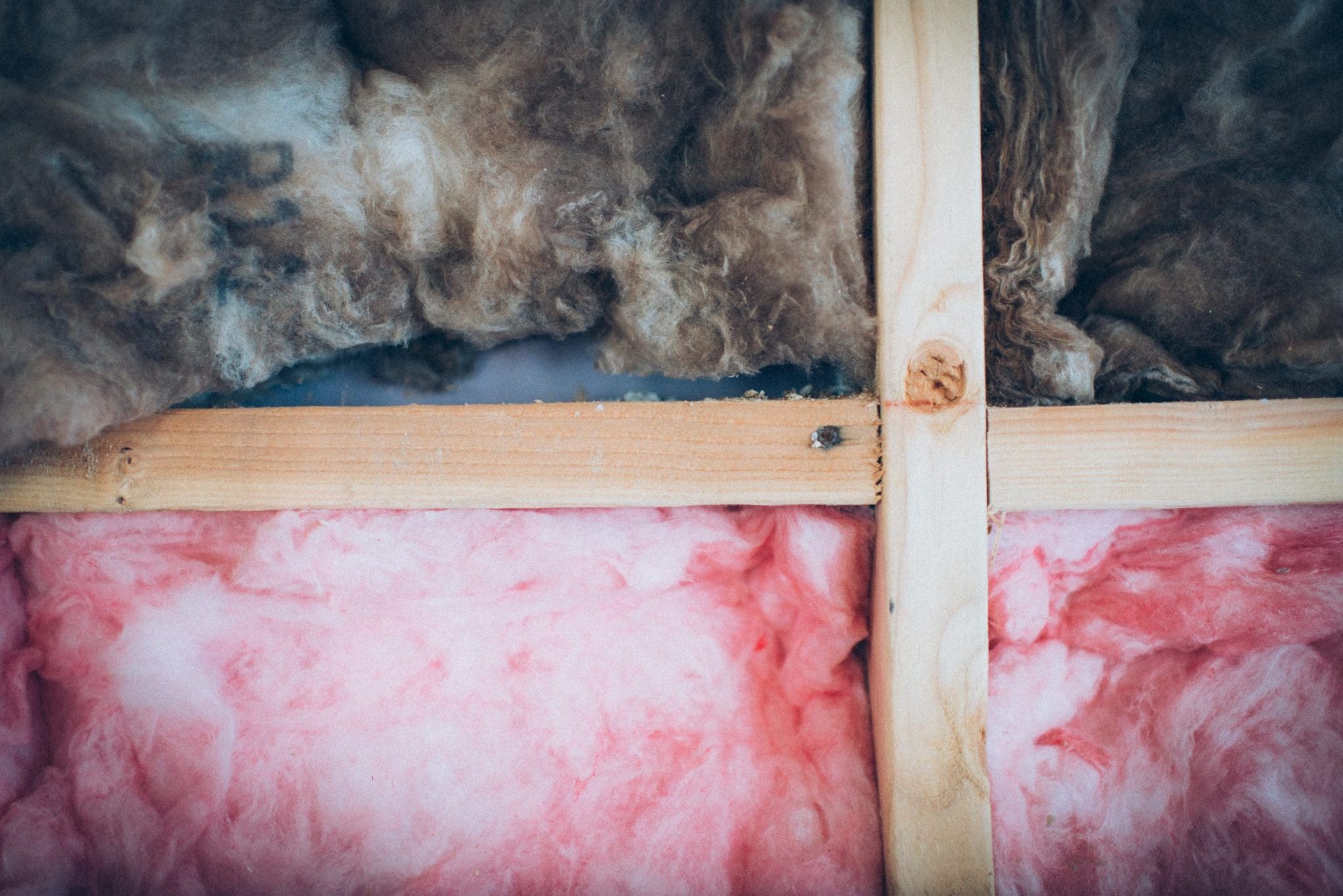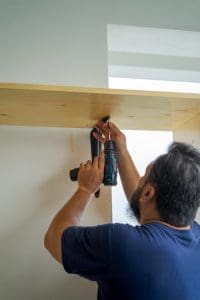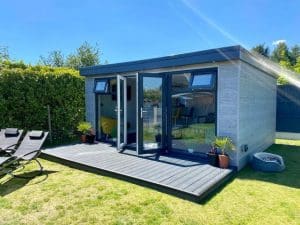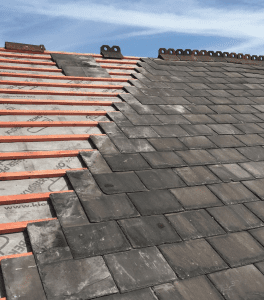If you live in an older house and are looking to enhance its energy efficiency without compromising its charm, there’s a solution that suits homes with solid or single-skin walls: solid wall insulation. By investing in wall insulation, you can significantly reduce heat loss, lower your heating bills, and improve your property’s Energy Performance Certificate (EPC) rating.
In this comprehensive guide, 3D Construction will walk you through everything you need to know about insulating older houses, from understanding the construction methods used in period homes to the different types of insulation available, and how they can positively impact your home’s energy efficiency.
Understanding the Construction of Older Houses in the UK
The way homes were constructed in the UK has evolved over the years, and older properties, especially those built before the 1920s, were typically built using different methods than modern homes. This is why insulation solutions for these houses need to be carefully considered to ensure they are effective.
Single-Skin Walls
Houses built before the 1920s generally have single-skin walls, meaning their exterior walls are composed of just one layer of brick or stone. Unlike cavity walls, single-skin walls lack an insulating gap between the outer and inner layers, making them far less efficient at retaining heat. This construction method is common in Victorian and Edwardian homes and is often a major contributor to heat loss in these properties.
Cavity Walls
On the other hand, houses built after the 1920s tend to have cavity walls, which consist of an internal wall built from blocks and an external wall made of bricks, with a gap or cavity between them. This gap can be filled with insulation material, and many properties built in the last 50 years already have cavity wall insulation installed. You can identify whether your cavity walls are insulated by checking for small, circular holes on the outer walls that have been filled in with cement. These holes were drilled to inject insulation material into the cavity.
Insulating Solid Walls in Older Homes
For homes with single-skin or solid walls, insulation can be installed either internally or externally. Both methods are effective in improving energy efficiency, but they each come with their own set of considerations.
Internal Wall Insulation
Internal wall insulation involves adding insulation to the inside of the external walls of your home. This is achieved by either attaching rigid insulation boards directly to the walls or by creating a stud wall filled with insulation material. While internal insulation will reduce the dimensions of your rooms by a few inches, it offers several benefits, including improved warmth, a reduction in outdoor noise, and a potential increase in property value due to improved energy efficiency.
When done correctly, internal wall insulation can significantly improve your home’s EPC rating, making it more appealing to future buyers and tenants. It also offers the added advantage of maintaining the external appearance of period properties, preserving their original charm.
External Wall Insulation
External wall insulation involves attaching insulation to the outer surface of your home
‘s walls. Typically, materials such as mineral wool, rigid foam, or cellulose insulation are used, and these are then covered with a protective render or cladding. While this method improves the thermal performance of your home, it alters the appearance of your exterior, which might be a concern if you live in a period property with attractive brickwork or stone facades.
External wall insulation provides a robust barrier against the elements, improving energy efficiency while also offering extra protection against weather conditions. However, it’s important to ensure that the insulation is installed properly around window frames and other openings to prevent thermal bridging, which could result in heat escaping through these gaps.
Both internal and external insulation techniques can transform the energy efficiency of a home, but the choice will depend on your priorities—whether you want to preserve the aesthetic appeal of your home or maximise interior space. Working with professionals such as 3D Construction can help ensure that the best approach is selected for your property.
Choosing the Right Insulation Material for Old Houses
When insulating an older property, selecting the right insulation material is crucial for maximising energy efficiency while considering cost, ease of installation, and ecological impact. Here are some of the most common insulation materials available, each with its own set of advantages and disadvantages.
Natural Fibre Insulation
Natural fibres, such as sheep’s wool or cotton, are sustainable insulation materials that are gaining popularity for use in older homes. These fibres are eco-friendly and have excellent thermal properties, trapping warmth inside your home. One key benefit of natural fibres is their breathability, allowing moisture to pass through, reducing the risk of condensation and dampness, which is important for maintaining the structural integrity of older houses.
However, natural fibre insulation can be more expensive than synthetic options, and its availability may be limited depending on your location.
Cellulose Insulation
Cellulose is a popular option for those seeking a budget-friendly and eco-conscious insulation material. Made from recycled newspapers, cellulose is treated with borates to make it fire-resistant and protect against pests. It can be installed in cavity walls or as loose-fill insulation in attics and other areas where space is tight.
While cellulose insulation is effective and sustainable, it can settle or compress over time, reducing its insulating properties. It’s important to consider this potential drawback and consult a professional about whether this material is appropriate for your home’s specific needs.
Mineral Wool Insulation
Mineral wool, made from molten rock or slag, is an excellent choice for insulating older houses, particularly those with solid walls. It offers a high level of thermal resistance and is naturally fire-resistant, making it one of the safest options available. Mineral wool is also effective at reducing noise, providing sound insulation for your home.
Despite its excellent performance, mineral wool is one of the more expensive insulation materials on the market. However, its longevity and high R-value (thermal resistance rating) make it a worthwhile investment for homeowners looking to significantly improve their home’s energy efficiency.
Rigid Foam Insulation
Rigid foam insulation is ideal for use in older homes where there are hard-to-reach spaces or walls that are prone to moisture. This type of insulation forms a secure barrier against heat loss, preventing warm air from escaping through walls and helping to reduce your overall heating costs. Additionally, rigid foam is resistant to damp and mould growth, making it a good choice for properties that may struggle with condensation issues.
While rigid foam insulation is highly effective, it is one of the more costly options, so it may not be the first choice for homeowners on a tight budget. However, its ability to reduce thermal bridging and improve energy efficiency makes it a strong contender for boosting your home’s EPC rating.
Improving Your Home’s EPC Rating with Insulation
One of the main reasons homeowners invest in insulation is to improve their Energy Performance Certificate (EPC) rating, which measures the energy efficiency of a property. Improving this rating can help reduce energy bills, increase comfort, and make your home more attractive to buyers or tenants.
By insulating the walls of your older home, you can prevent heat loss, reducing the amount of energy needed to heat your home and thus improving your EPC rating. Even if you can only insulate a portion of your home’s exterior, such as the side that receives the least sunlight, you’ll still see a noticeable improvement in your energy efficiency.
In addition to wall insulation, there are other steps you can take to further improve your EPC rating:
- Draught-proofing: Sealing gaps around windows, doors, and chimneys can reduce heat loss and improve your home’s thermal efficiency.
- Upgrading heating controls: Installing modern heating controls, such as thermostats and radiator valves, allows you to better regulate the temperature of your home, saving energy and reducing costs.
- Loft insulation: Adding insulation to your loft or attic can help prevent heat from escaping through the roof, further boosting your energy efficiency.
Hiring Professionals for Insulating Older Homes
Insulating an older property is a complex task that requires the expertise of qualified professionals. Working with experienced tradespeople, such as those at 3D Construction, ensures that the insulation is installed correctly and complies with current building regulations.
An expert can assess your home’s specific needs, recommend the best insulation material, and ensure that the insulation is installed in a way that prevents problems such as damp or condensation. Incorrect installation or the use of inappropriate materials can lead to issues that could cost you more in the long run, so it’s always best to invest in professional services for such an important project.
Conclusion: Transforming Your Home with Wall Insulation
Insulating the walls of an older home can have a transformative effect on its energy efficiency, helping to reduce heating costs, improve comfort, and boost your property’s value. By working with professionals like 3D Construction and choosing the right insulation method and materials, you can achieve significant energy savings while preserving the unique character of your period property.
Whether you opt for internal or external wall insulation, and regardless of the materials you choose, your investment in insulating your home will not only help the environment but also provide long-term financial and comfort benefits.




